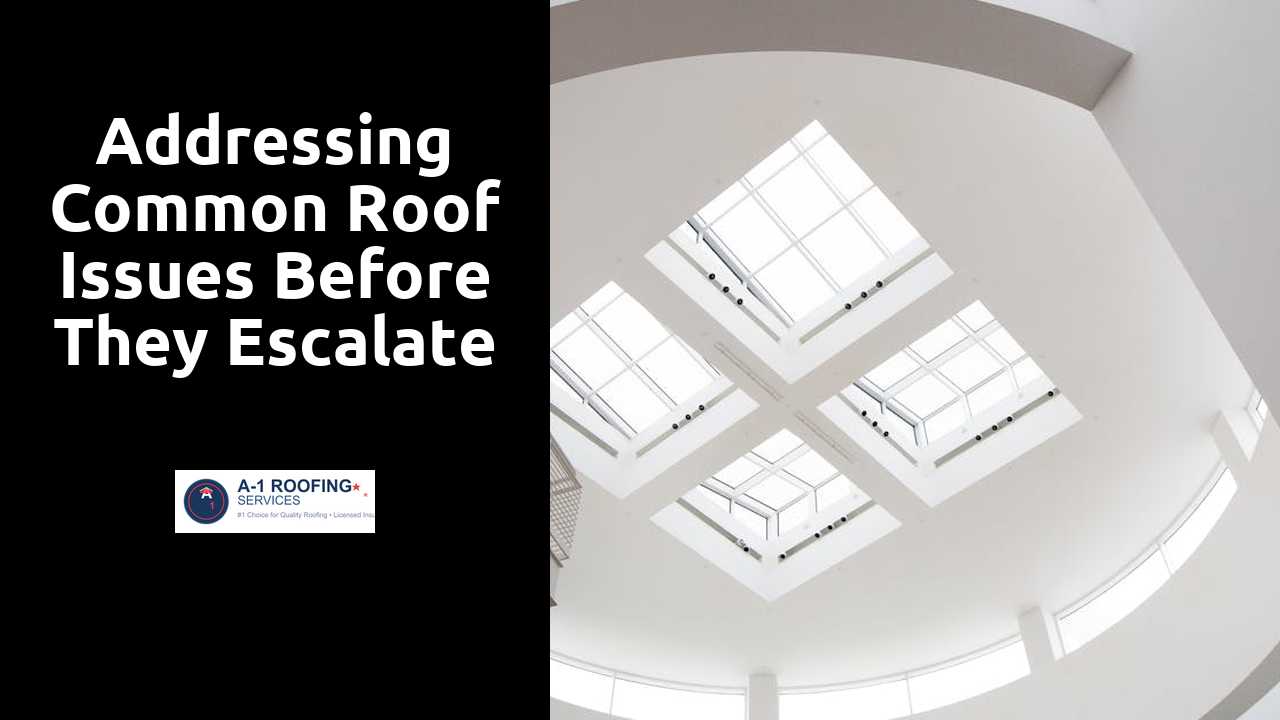
Addressing Common Roof Issues Before They Escalate
Table Of Contents
Dealing with Clogged Gutters
Clogged gutters can lead to a range of issues for homeowners. When debris accumulates, it prevents water from draining properly, resulting in overflow. This overflow can cause water to pool around the foundation, leading to potential structural damage. Additionally, standing water in gutters creates an environment conducive to mold and mildew growth, which can compromise the overall health of your home.
Regular maintenance is crucial in preventing clogs. Homeowners should consider clearing gutters at least twice a year. Investing in gutter guards can significantly reduce the amount of debris that enters the system. Observing the condition of gutters during heavy rainfall can also help in identifying blockages early and mitigating any associated damage before it becomes a larger issue.
Hop over here to discover more.
Maintenance Tips to Prevent Water Damage
Regularly inspecting and maintaining gutters is crucial for preventing water damage. Ensure gutters are clear of debris, leaves, and dirt. This prevents water from overflowing and cascading down the sides of your home. A single heavy rain can quickly fill clogged gutters, creating a risk of flooding in basements and around the foundation. Additionally, check downspouts to ensure they direct water away from the house.
Checking the condition of your roofing materials is also essential. Damaged shingles can allow moisture to seep in, leading to leaks and structural damage. Pay attention to any signs of wear or granule loss. Sealing any gaps or cracks around chimneys, vents, and skylights helps guard against rainwater penetration. Regular inspections and timely repairs can significantly extend the lifespan of your roof and prevent costly water damage.
Signs of Roof Aging
As roofs age, they often exhibit distinct signs that homeowners should be vigilant about. A common indicator is the presence of curling or buckling shingles. This can occur due to prolonged exposure to harsh weather conditions. Discoloration and fading, particularly in areas that receive direct sunlight, are also prevalent as roofing materials succumb to time and the elements. Additionally, granules from asphalt shingles may accumulate in gutters, indicating deterioration of the shingles' protective layer.
Another telltale sign is the formation of leaks or water stains on the interior ceilings or walls. This suggests that the roofing material has lost its integrity and is no longer effective at keeping moisture out. Persistent growth of moss or algae can be detrimental, as it often traps moisture against the roof surface. Homeowners should inspect their roofs regularly for these signs of aging to address potential issues before they advance.
When to Consider a Roof Replacement
Roofing materials have a finite lifespan, which means that knowing when the time has come for replacement is crucial. Signs of aging or severe damage, such as curling shingles, widespread granule loss, and persistent leaks, indicate that a roof is no longer performing its protective function. Homeowners should monitor these issues regularly, as neglecting them can lead to more serious structural problems and increased repair costs over time.
In addition to visible deterioration, an increase in energy bills may signal that a roof is failing to insulate a home properly. If consistent repairs do not seem to address ongoing issues, it might be time to evaluate the roof's overall integrity. Consulting with a professional roofing contractor can provide insights into whether repairs are sufficient or if a full replacement is in the homeowner's best interest.
Preparing for Severe Weather
Preparing your roof for severe weather can save you significant stress and expense. Start by inspecting your roof for any loose or damaged shingles. Replace any that show signs of wear. Ensure flashings around chimneys, vents, and skylights are in good condition to prevent leaks. Regular maintenance helps identify potential issues before storm season begins.
Clear debris from the roof and gutters to facilitate proper drainage during heavy rain. Consider reinforcing roof structures if you live in an area prone to high winds or heavy snowfall. Properly trimmed trees can also minimize the risk of branches falling onto your roof during a storm. Taking these steps now can reduce long-term damage and enhance your roof's resilience against extreme weather events.
Essential Steps to Protect Your Roof
Regular roof inspections play a vital role in maintaining the integrity of your roof. Conducting these assessments at least twice a year helps identify potential weaknesses or damage early on. Look for missing shingles, cracks, or any signs of wear that may compromise the roof’s effectiveness. Maintaining clear visibility of your roofing materials can prevent minor problems from escalating into major repairs.
Cleaning the roof is equally important for its protection. Debris such as leaves, branches, and dirt can accumulate, retaining moisture and leading to mold or rot over time. Pressure washing can effectively remove this buildup, although care must be taken to avoid damaging shingles. Using a soft-bristle broom for specific areas ensures a gentle yet thorough cleanup. Keeping gutters clean also contributes significantly to the overall health of your roof.
Related Links
Understanding the Role of Gutter Maintenance in Roof HealthTips for Maintaining Roof Flashing Integrity